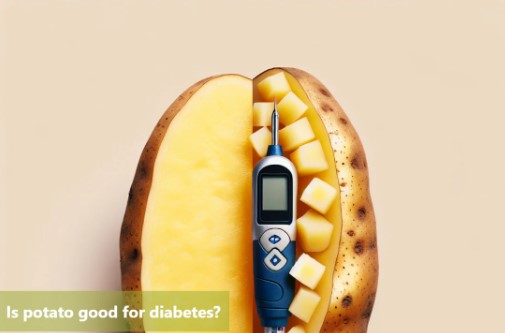
Managing Diabetes With Potatoes: Tips For Balanced Blood Sugar
People with diabetes frequently have a negative opinion of potatoes because of their high carbohydrate content, which can lead to blood sugar increases. But when cooked and eaten properly, potatoes may be a healthy component of a diet that is suitable for those with diabetes. The key is understanding how to manage portion sizes, choose the right cooking methods, and pair potatoes with other nutrient-rich foods to balance blood sugar levels. Here’s how you can enjoy potatoes without compromising your diabetes management.
1. The Glycemic Index Of Potatoes
The glycemic index (GI) measures how quickly foods raise blood sugar levels. Potatoes can quickly spike blood sugar due to their high GI. However, the GI of potatoes can vary based on the type of potato and how it is prepared. For instance, boiled potatoes have a lower GI compared to baked or mashed potatoes. To minimize the impact on blood sugar, choose potatoes with a lower GI and cook them in ways that help reduce rapid glucose absorption. When it comes to potatoes and diabetes, choosing the right preparation methods and pairing them with protein-rich foods can help keep blood sugar levels balanced.
2. Choosing The Right Potato Varieties
Different types of potatoes can affect blood sugar differently. Sweet potatoes and new potatoes (young, small potatoes) have a lower GI compared to white potatoes, making them better choices for those managing diabetes. Sweet potatoes include fiber, which can help slow down digestion and cause blood sugar levels to rise more gradually. Additionally, red and purple potatoes have a slightly lower GI and offer antioxidants that can support overall health.
3. Portion Control Is Key
Regardless of the type of potato, portion control is essential for maintaining balanced blood sugar. A good rule of thumb is to stick to about a half-cup serving of cooked potatoes, which provides around 15 grams of carbohydrates. Monitoring portion sizes helps prevent excessive carbohydrate intake, which can lead to blood sugar spikes. Pairing the potatoes with a source of protein or healthy fat can further help to stabilize blood sugar levels.
4. Pair Potatoes With Protein And Fiber-Rich Foods
Combining potatoes with foods that are high in protein and fiber can help reduce their glycemic impact. Protein slows down digestion and absorption of carbohydrates, leading to steadier blood sugar levels. For instance, enjoy potatoes with grilled chicken, fish, or tofu. In a similar vein, vegetables high in fiber, such as spinach, broccoli, or a mixed salad, might help reduce the rate at which glucose is absorbed, so regulate blood sugar levels. Including healthy fats like almonds, avocado, or olive oil can also aid in controlling blood sugar.
5. Opt For Healthy Cooking Methods
The way potatoes are prepared can significantly affect their impact on blood sugar. Boiling or steaming potatoes with the skin on helps retain their nutrients and lower their GI compared to frying or baking. Avoid adding high-calorie toppings like butter, sour cream, or cheese, which can add unhealthy fats and calories to your meal. Instead, try seasoning your potatoes with herbs, spices, and a drizzle of olive oil for a diabetes-friendly dish.
6. Try Chilling Potatoes Before Eating
A little-known tip for lowering the GI of potatoes is to cool them after cooking. When potatoes are refrigerated, they produce resistant starch, a form of difficult-to-digest fiber that can help reduce blood sugar spikes. You can cook potatoes ahead of time, chill them in the refrigerator, and then reheat or eat them cold as part of a salad. This simple step can make potatoes more diabetes-friendly.
7. Monitor Your Blood Sugar Levels
Since each person with diabetes may react differently to certain foods, it’s important to monitor blood sugar levels after consuming potatoes. Keeping track of how your body responds can help you adjust your portion sizes and preparation methods to better manage your blood sugar. A blood glucose monitor can be a helpful tool in identifying how different potato dishes affect your levels.
Read also: Food:__Yw2f4ciic= Maggie
Conclusion
Potatoes can indeed be part of a healthy diet for those with diabetes when consumed mindfully. By choosing lower GI varieties, practicing portion control, pairing them with protein and fiber-rich foods, and opting for healthy cooking methods, you can enjoy potatoes without compromising your blood sugar management. To manage your diabetes while eating your favorite foods, monitor your blood sugar levels and make modifications.




